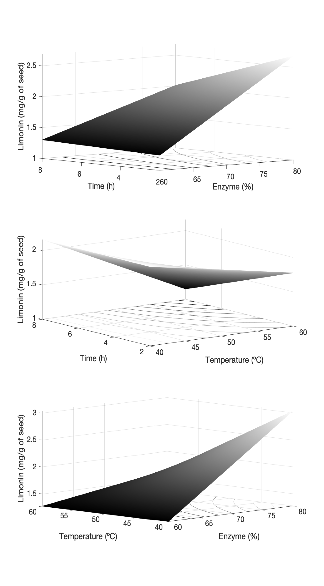 |
|
The byproducts from orange (Citrus sinensis) and lime (Citrus aurantiifolia) constitute nearly 50 wt. % of the fresh fruit and, unfortunately, these are discarded. These residues could be utilized to obtain extractable compounds of high added value, such as limonene and limonin.
The extraction of limonene from peels and limonin from seeds, from both orange and lime, was evaluated with a commercial enzyme (Macerex). It was found that the yield of limonene was 17-fold higher (4.0 and 4.7 mg/g-peel from orange and lime respectively) using the enzymatic treatment as compared to blank. More bioactive compounds and in a higher concentration were obtained from peels using the enzymatic treatment as compared to blank.
Limonin yield was twofold when the enzymes were applied to orange and lime seeds, as compared to blank (2.5 mg/g-orange seeds and 3.0 mg/g-lime seeds). The amounts of extracted limonene and limonin had a correlation with the amount of sugars released during degradation of the vegetal tissue.
Enzymatic extraction of bioactive compounds from citrus by-products exhibits high yields, similar to traditional extraction treatment such as hydrodistillation, but under milder conditions.
Keywords: limonene, limonin, Citrus sinensis, Citrus aurantiifolia, enzymatic extraction.
|
|
 |

